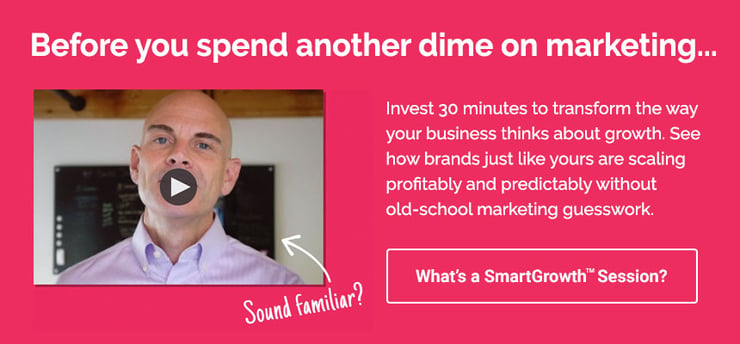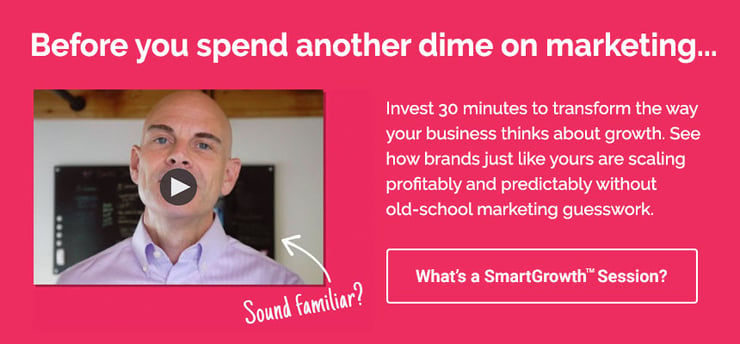Picture this: You're a B2B founder, burning the midnight oil, trying to figure out why your marketing efforts aren't quite hitting the mark. Your sales team is grumbling about lead quality, and you're left wondering where the disconnect lies. Sound familiar?
The solution might be simpler than you think - it's time to map out your customer's journey. Why? The B2B buyer's journey is notoriously long. It’s multi-touch, multi-channel. And your customers are all at different stages of the journey. Understanding the various landmarks along the journey can bring clarity where previously, there was only confusion.
In this article, we'll walk you through the essential components of a killer customer journey map, from key website pages to lifecycle stages. We'll show you how this powerful tool can prioritize your marketing efforts, plug content gaps, and turn your sales process into a well-oiled machine.
Ready to transform your customer's journey from a maze into a yellow brick road? Let's dive in.
Why Create a B2B Customer Journey Map?
Prioritize Marketing Efforts
A well-crafted B2B customer journey map allows you to pinpoint where your marketing efforts will be most effective. It identifies the critical stages in the buyer's journey where potential customers are most likely to engage with your brand. For example, if your map reveals that prospective clients spend considerable time researching during the consideration phase, you can prioritize educational content and targeted campaigns to address their specific needs at that point. This ensures that your marketing budget and resources are utilized efficiently and effectively.
Identify Content Gaps
One of the hidden gems of creating a B2B customer journey map is its ability to highlight content gaps. By outlining each stage of the customer journey, you can easily spot areas where your existing content falls short or is entirely missing. For instance, you might discover that while you have a plethora of B2B blog content for the awareness stage, there are few in-depth case studies or testimonials to aid decision-making during the later stages. Addressing these gaps ensures a smoother, more informative journey for your prospects.
Plot Automation Workflows
Automation can drastically improve efficiency and consistency in customer interactions. A B2B customer journey map aids in plotting these automation workflows by providing a clear picture of the touchpoints and actions required at each stage. Whether it’s sending a follow-up email nurture campaign after a demo request or triggering a retargeting campaign for those who have shown interest but not yet converted, the map guides you in creating seamless and timely automated responses that keep prospects engaged.
Document Lifecycle Stages
Understanding the lifecycle stages of your customers is crucial for tailored engagement strategies. A B2B customer journey map meticulously documents these stages, from initial awareness to long-term loyalty. This comprehensive documentation not only helps in personalizing interactions but also in forecasting customer behavior and planning proactive measures to enhance satisfaction and retention.
Establish Lead Criteria
Defining what constitutes a qualified lead is essential for alignment between marketing and sales teams. A B2B customer journey map clarifies this by delineating specific actions or behaviors that indicate a lead’s readiness to move to the next stage. This ensures that only high-quality leads are passed on to sales, optimizing their efforts and increasing the chances of conversion.
Eliminate Friction
Friction points are the obstacles that hinder a smooth customer journey. By mapping out the entire journey, you can identify and address these pain points. For instance, if customers frequently drop off during the trial phase due to complicated onboarding processes, you can take corrective measures such as simplifying the process or providing additional support. This proactive approach leads to a more seamless and satisfying customer experience.
Streamline the Sales Process
A streamlined sales process is vital for closing deals efficiently. A B2B customer journey map offers sales teams invaluable insights into the buyer’s mindset at each stage, allowing them to tailor their approaches and interactions accordingly. This can significantly reduce the sales cycle and improve close rates by ensuring that sales pitches and solutions are perfectly aligned with the customer’s current needs and concerns.
Get Everyone in Your Organization on the Same Page
The most important benefit of creating a B2B customer journey map is achieving organizational alignment. When everyone—from marketing to sales to customer support—has a unified understanding of the customer journey, it fosters cohesive strategies and coordinated efforts. This alignment ensures that every team member works towards the same goals, using consistent messaging and approaches. In the long term, this unity enhances internal efficiency and creates a more cohesive and satisfying experience for your customers.
Key Components of a B2B Customer Journey Map
Creating an effective B2B customer journey map is crucial for growth-stage startups. It's the roadmap that guides your prospects from initial awareness to becoming loyal customers. Let's break down the essential elements you need to include:
Key Website Pages
Your B2B website is often the first touchpoint for potential customers. Organize your pages to align with the buyer's journey:
- Entry points for top-of-funnel traffic: Blog posts, informational landing pages, and resource centers attract "cold" prospects seeking information.
- Middle-of-funnel pages: Case studies, comparison guides, and detailed product information engage "warm" leads evaluating solutions.
- Bottom-of-funnel pages: Pricing, demo request forms, and free trial offers convert "hot" prospects ready to make a decision.
- Optimize these pages for conversions and user experience to maximize their impact on the customer journey.
Marketing Channels
Identify and leverage the right channels to reach your target audience:
- Pinpoint relevant channels where your buyers spend time, such as LinkedIn, industry publications, or niche forums.
- Distinguish between active channels (those currently driving results) and potential channels (untapped opportunities).
- Visualize how each channel contributes to different stages of the journey, from awareness to consideration and decision.
Nurture Strategy
B2B sales cycles are often long, requiring a robust nurture strategy:
- Build trust over time through consistent, valuable interactions.
- Implement email nurture campaigns tailored to buyer interests and pain points.
- Engage prospects on social media with thought leadership and industry insights.
- Create "slow burn" content like whitepapers, webinars, and in-depth guides to educate and qualify leads.
- Align your nurture content with specific buyer stages to maintain relevance throughout the journey.
Primary Offer
Define the main conversion point that bridges marketing and sales:
- Identify your primary offer, such as a demo request, consultation, or sales call.
- Ensure this offer is compelling and clearly communicated across touchpoints.
- Create a seamless handoff between marketing and sales teams at this critical juncture.
Sales Process
Document the key milestones in your sales process:
- Map out major steps from discovery call to closed deal (won or lost).
- Align these milestones with your CRM deal stages for consistency.
- Identify potential bottlenecks or drop-off points to address proactively.
Lifecycle Stages
Establish clear definitions for tracking buyer progress:
- Define labels like Lead, Marketing Qualified Lead (MQL), and Sales Qualified Lead (SQL).
- Set specific start and end points for each stage in the journey.
- Develop criteria for qualifying leads at each stage to ensure proper nurturing.
- Create smooth transitions between stages to maintain momentum.
By incorporating these key components into your B2B customer journey map, you'll gain a comprehensive view of your prospect's path to purchase. This insight allows you to optimize touchpoints, streamline processes, and ultimately drive more conversions for your growth-stage startup.
B2B Customer Journey Map: Next Steps
Remember that late-night frustration we talked about at the beginning? Well, armed with your new B2B customer journey map, those days are soon to be a distant memory. From optimizing your B2B website to fine-tuning your lifecycle stages, you're ready to fine-tune your B2B marketing and sales processes and guide your prospects smoothly through their buying journey.
But creating this map is just the start of your adventure. The true magic happens when you put it into action, continually refine it, and watch as your lead quality improves and your sales team starts giving you high-fives instead of headaches.
Ready to take your B2B marketing to the next level? Don't stop here. If you've found this guide helpful, you're going to love Brand Theory's free Growth 2.0 Playbook. It's packed with actionable strategies to complement your new journey map and skyrocket your results. Grab yours today. Your future self (and your sales team) will thank you.





.png)
.png)
.png)